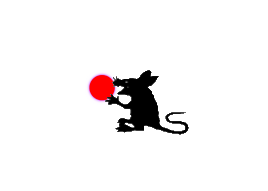Ed Steck
The House by the Cemetery /
Beyond the Door

Duality of the afterimage renders the visual
always “beyond the door” or outside of the
frame, outside of the frame, outside of the
frame shifts in perception from The Beyond
to the present—a doorway to extra-banality
of supernatural, something cosmic to atone
for, like the sudden materialization of death
stalking the corners of a long liminal corridor
tucked away in those shadiest failed attempts to
recall submerged faces from demographic data—
where something is alive in the basement.
always “beyond the door” or outside of the
frame, outside of the frame, outside of the
frame shifts in perception from The Beyond
to the present—a doorway to extra-banality
of supernatural, something cosmic to atone
for, like the sudden materialization of death
stalking the corners of a long liminal corridor
tucked away in those shadiest failed attempts to
recall submerged faces from demographic data—
where something is alive in the basement.
Beyond the Door. Directed by Ovidio G. Assonitis (as O. Hellman), and Roberto Piazzoli (as R. Barrett) A Erre Cinematografica, and Montoro Productions Ltd., 1974.
In the alchemy of uncoordinated night, my face
wrinkles at its openings—nose hair, nostrils, ear
canal, eyeballs: each orifice a chance of entering
my body by burrowing into the liminal chasms
of the system inside, bludgeoned juicy cherry red
constant birth of opposing sentences—the eye
is a door beyond the frame, it copies as it records
to rehash what is real to the other side. Lost in
atmospherics of the copy, puke practical effects
bridge replica trauma to here, to imaginal exposure:
where something is alive in the basement.
wrinkles at its openings—nose hair, nostrils, ear
canal, eyeballs: each orifice a chance of entering
my body by burrowing into the liminal chasms
of the system inside, bludgeoned juicy cherry red
constant birth of opposing sentences—the eye
is a door beyond the frame, it copies as it records
to rehash what is real to the other side. Lost in
atmospherics of the copy, puke practical effects
bridge replica trauma to here, to imaginal exposure:
where something is alive in the basement.
The House by the Cemetery. Directed by Lucio Fulci, Fulvia Film and Medusa Distribuzione, 1981.
A lack of coherence in atmosphere concretizes
total aesthetic awareness of a world hodgepodge
obfuscated by regionalism trapped in cosmic horror.
Stripped away of the home, the family, the unit:
the drift of the liminal overtakes accepted knowns
until the unseen slips into the majority, when the
floating sheet appears on rollcall, when the burial
site is in the hallway, when the new home is a door
to interdimensional unclassifiable collapsed zones
beyond distinguishable token motifs of recognizable
worlds where knowns are defined: something else.
Fulci Lives: no name for the conceivable placement,
instead advanced knowledge of decaying obscurity
as withdrawn original prints vinegar and peel, bleed,
bubble and ooze goo upon the printed remnants of
Fulci’s world visualized/the crudeness of Fulci opens
the doors of inconceivable horror into our world—its
materialization found in molasses, plastic tubes, prop
knives, budget blood; signs pointing to how thin our
world is, that store-bought ingredients form practical
magic scraping flesh from muscle until skinless shapes
are defined knowns. Everything else is something else.
total aesthetic awareness of a world hodgepodge
obfuscated by regionalism trapped in cosmic horror.
Stripped away of the home, the family, the unit:
the drift of the liminal overtakes accepted knowns
until the unseen slips into the majority, when the
floating sheet appears on rollcall, when the burial
site is in the hallway, when the new home is a door
to interdimensional unclassifiable collapsed zones
beyond distinguishable token motifs of recognizable
worlds where knowns are defined: something else.
Fulci Lives: no name for the conceivable placement,
instead advanced knowledge of decaying obscurity
as withdrawn original prints vinegar and peel, bleed,
bubble and ooze goo upon the printed remnants of
Fulci’s world visualized/the crudeness of Fulci opens
the doors of inconceivable horror into our world—its
materialization found in molasses, plastic tubes, prop
knives, budget blood; signs pointing to how thin our
world is, that store-bought ingredients form practical
magic scraping flesh from muscle until skinless shapes
are defined knowns. Everything else is something else.
Ed Steck, a writer in Pittsburgh, is author of The Garden, An Interface for a Fractal Landscape, David Horvitz: Newly Found Bas Jan Ader Film, and others.
